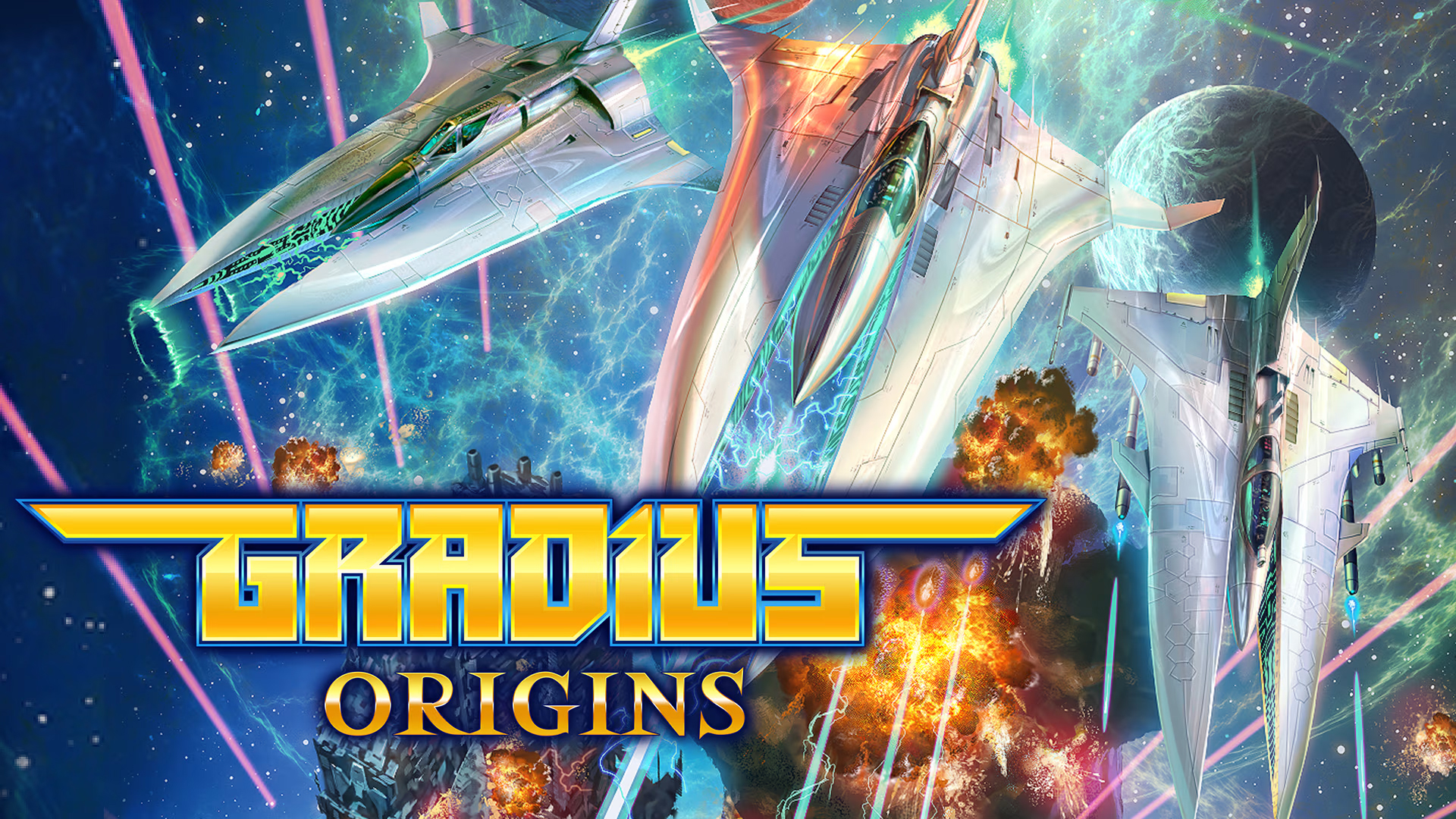The Gradius series, born in the arcades of 1985, is a lineage of side-scrolling shoot-em-ups defined by relentless precision and cosmic warfare. A lone starfighter, the Vic Viper, carves through waves of alien fleets and mechanical monstrosities across vibrant, treacherous galaxies, and an unbelievably high difficulty curve.
Konami eventually introduced variants like Salamander and Life Force, tweaking the formula with branching paths and co-op play. Later entries like Gradius V implemented 3D visuals alongside classic 2D mechanics, preserving the saga’s legacy of skill-driven triumph against overwhelming odds. This is the franchise that led to the famous Konami code, all because a tester forgot to remove it.
Konami has been on a winning streak with their classic game compilations courtesy of M2. Each of the Castlevania collections was a certifiable hit, as well as one for Contra and even Yu-Gi-Oh. With the Gradius games finally getting their M2 treatment, how does this compilation hold up? Find out in our Gradius Origins review!
This is a review coupled with a supplemental video review. You can watch the video review or read the full review of the below:
GRADIUS ORIGINS
Developer: M2, Konami
Publisher: Konami
Platforms: Windows PC, Nintendo
Switch, Xbox Series X|S, PlayStation
5(reviewed)
Release Date: August 7, 2025
Price: $39.99
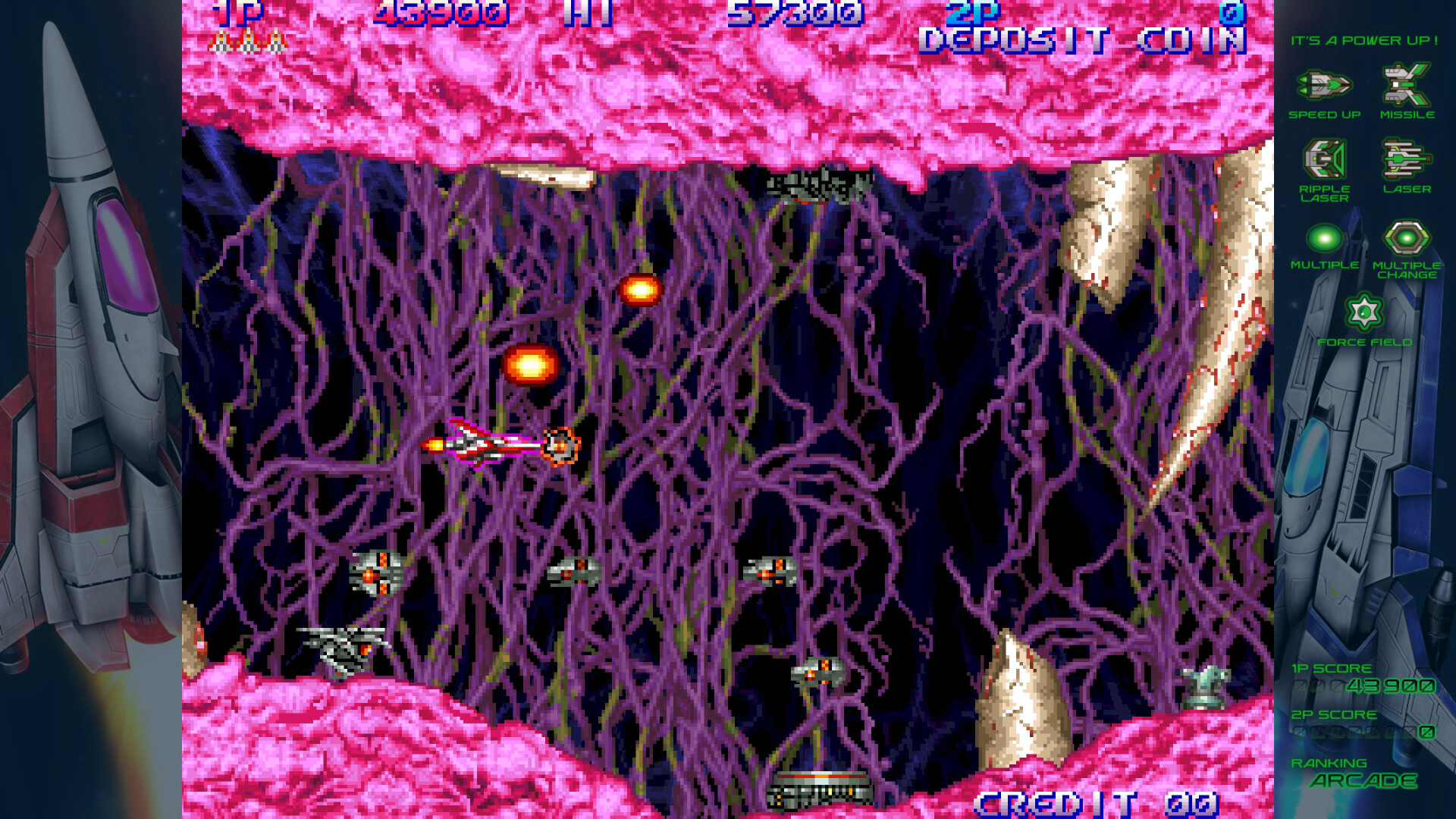
Gradius Origins is comprised of Gradius (1985), Gradius II (1988), Gradius III (1989), Salamander (1986), Life Force (1986), Salamander 2 (1996), and newly minted Salamander III (2025). With a total of seven games based on the arcade releases, with multiple versions between all of them, Gradius Origins has a lot to explore.
The original Gradius trilogy (and it is great) centers on the Vic Viper’s solitary battle through alien gauntlets, defined by its signature power-up system: collecting orbs fills a meter, allowing strategic selection of upgrades like speed, missiles, lasers, and orbiting options. If you really need a story, check out the anime OVA, which does an impressive job at expanding and adapting the anemic plot of the games.
The series distinctive power-up system revolves around defeated foes dropping capsules, each of which increments a power-up meter displayed at the screen’s bottom. The meter cycles through a sequence of upgrades like Speed Up, Missile, Double, Laser, Option, and Shield, and the player activates the highlighted upgrade by pressing a dedicated button.
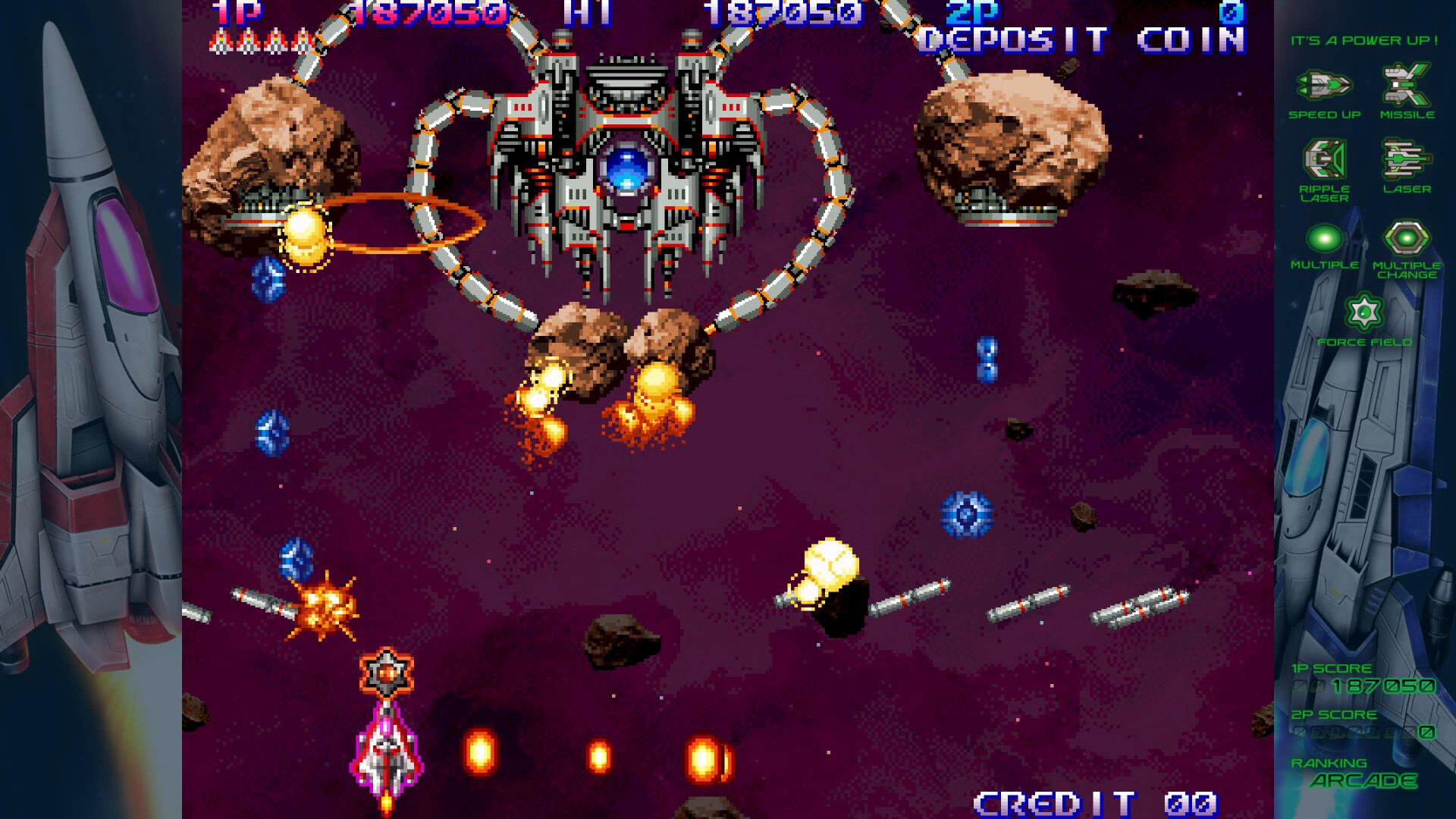
The upgrade system rewards strategic timing: collecting multiple orbs before selecting a power-up allows access to more potent upgrades, but death strips all enhancements, forcing a restart from a checkpoint with a barebones ship. Losing all the speed-ups is especially painful, as later stages are festooned with threats, making evasion almost impossible.
No matter which game you play, precision and memorization are paramount, with tight hitboxes and frantic respawns in hellish firefights. The first Gradius is a little crusty, being how it was programmed in the mid-80s, its not the smoothest and has starkly simplistic visuals, though the iconic Moai heads make their first appearance here. You dont get much lead time when respawning, making it all too easy to die again in the middle of stage hazards.
Gradius II refines the gameplay with smoother controls and more weapon variety. This is a more fluent experience where the series truly came into its own with richer visuals and punchier music. One thing that is persistent in all of these early Gradius games is that Vic Viper starts slow, and as you upgrade its speed, it can get out of hand to the point its too fast and hard to control.
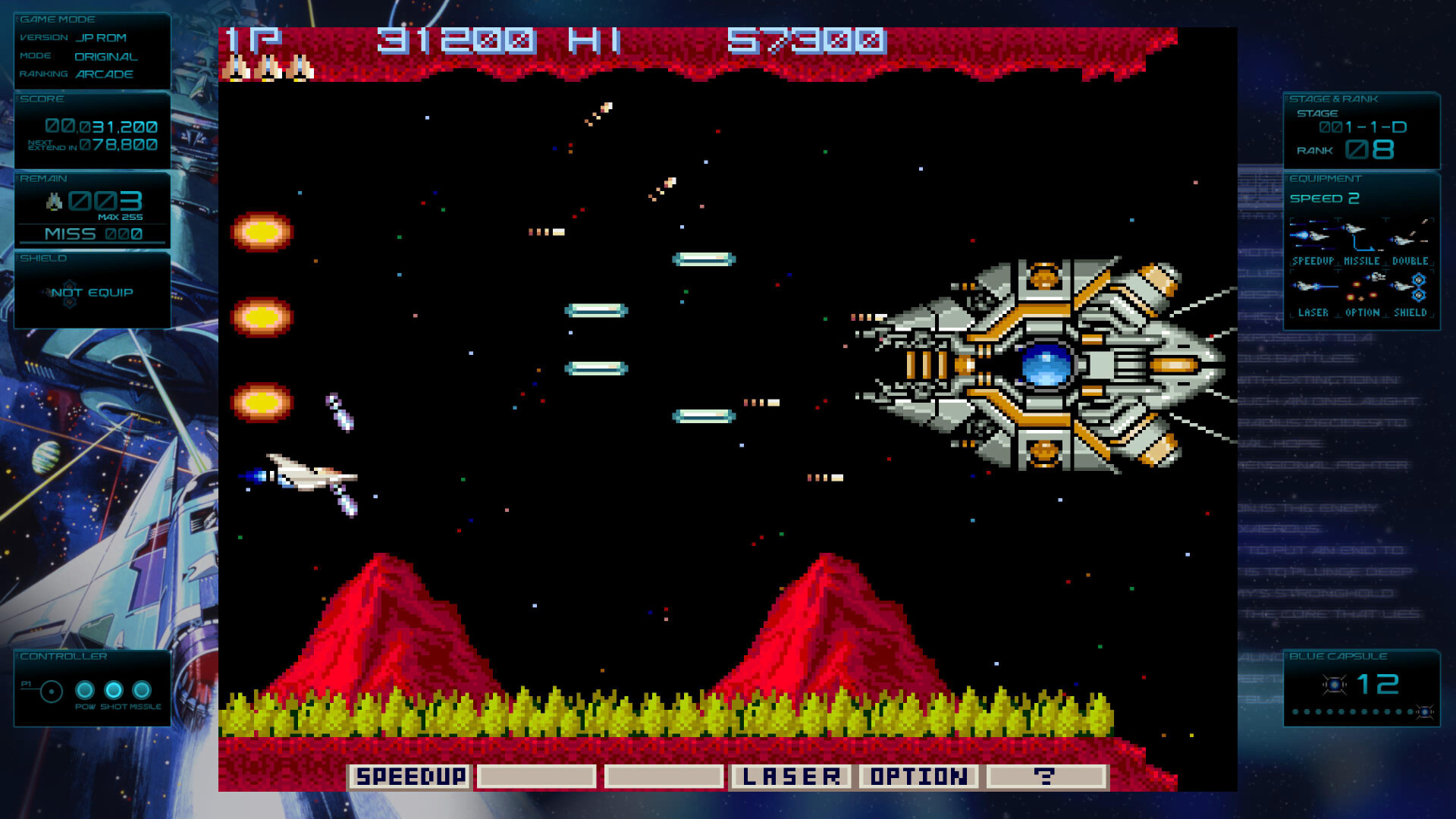
Gradius III introduces customizable loadouts, adding depth but also complexity. The upgrade palette is yours to build, and Speed Down is an option for those cases where speed kills when surrounded by deadly asteroids or solar flares. One of the more amusing additions is the shrink power-up up which makes evasion easier with a smaller hit box, though the action in these games is so spicy that it gets easy to lose track of Vic Viper even when its full-size.
Salamander and its sequel, by contrast, streamline progression: capsules grant immediate upgrades, fostering faster-paced action. Both feature co-op modes, and feel like they have looser hit detection, making them slightly more forgiving. Salamander alternates between side-scrolling and top-down perspectives, while Salamander 2 sticks to horizontal scrolling.
Salamander games diverge from Gradius’s meter-based system, opting for immediate, direct power-up acquisition. This creates faster-paced, reactive gameplay, with co-op modes amplifying the chaos. Death still strips upgrades, but respawns occur closer to the point of death, and you get a chance to reclaim lost upgrades, but the chaos is typically too severe to risk getting them back, and youll lose another Vic Viper.
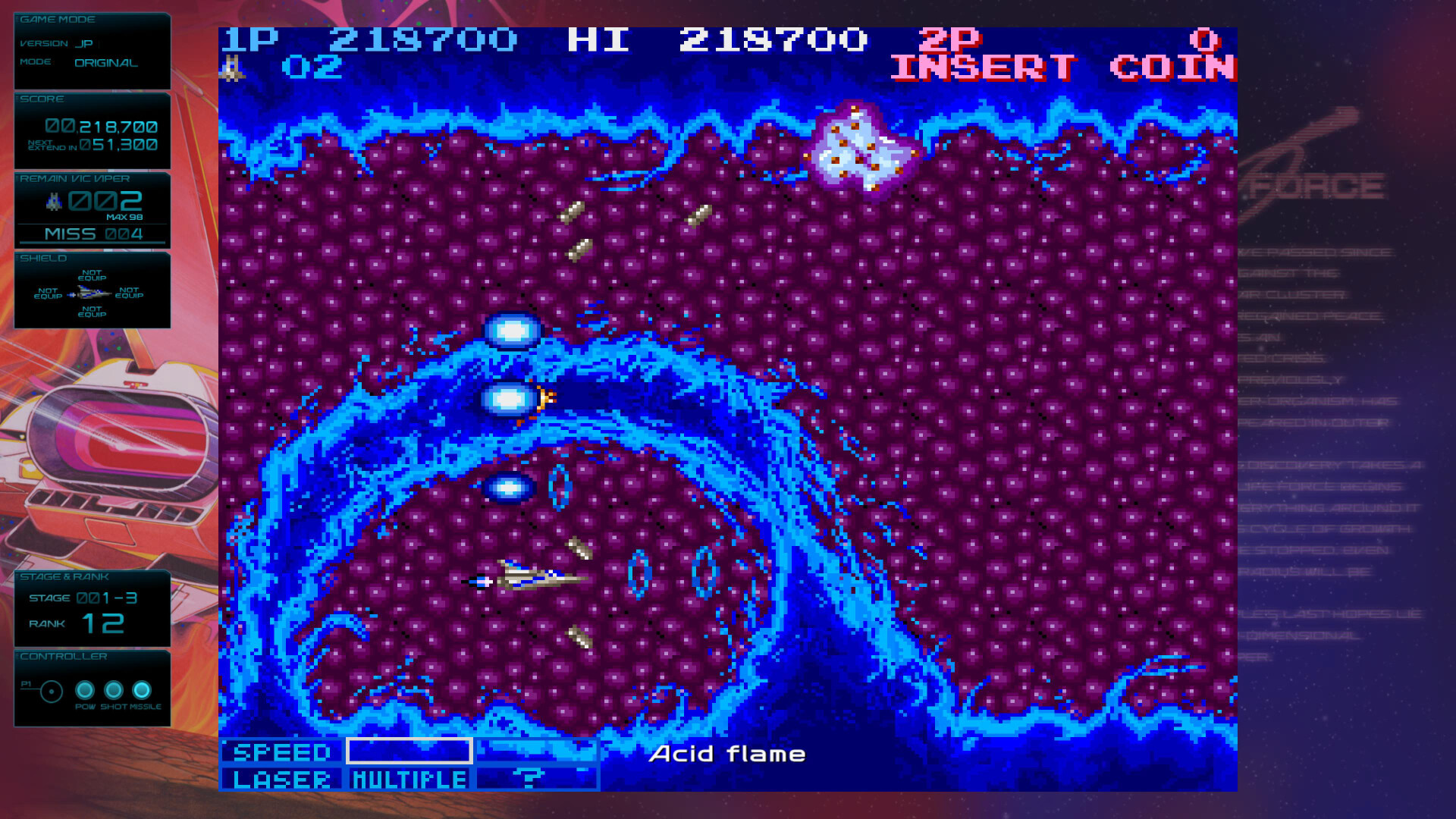
Gradius visuals are fairly basic since they were drawn in the 80s, with the Moai heads being the most iconic aspect of the game. Gradius II amplifies surrealist imagery with vibrant volcanic planets and crystalline caverns. Gradius III pushes further, introducing grotesque organic horror and large biomechanical boss sprites.
Salamander leans into biological dread and fantastic surrealism: pulsating flesh-walls, flame dragons, and body-horror bosses create a visceral, alien menace. Salamander 2 magnifies the H.R. Giger-inspired art with 32-bit arcade panache, boasting lush, layered backgrounds and massive, multi-part bosses that dwarf anything from prior games. For 1996, these are impressive graphics that still hold up.
Gradius Origins wouldnt be a complete M2 joint without their take on the franchise, and they knock it out of the park with Salamander III. This brand-new shoot-em-up is utterly dazzling, yet savagely difficult. The pixel art and animation are some of the most refined ever conceived in a space shooter, featuring some of the most devastating boss fights the series has ever seen.
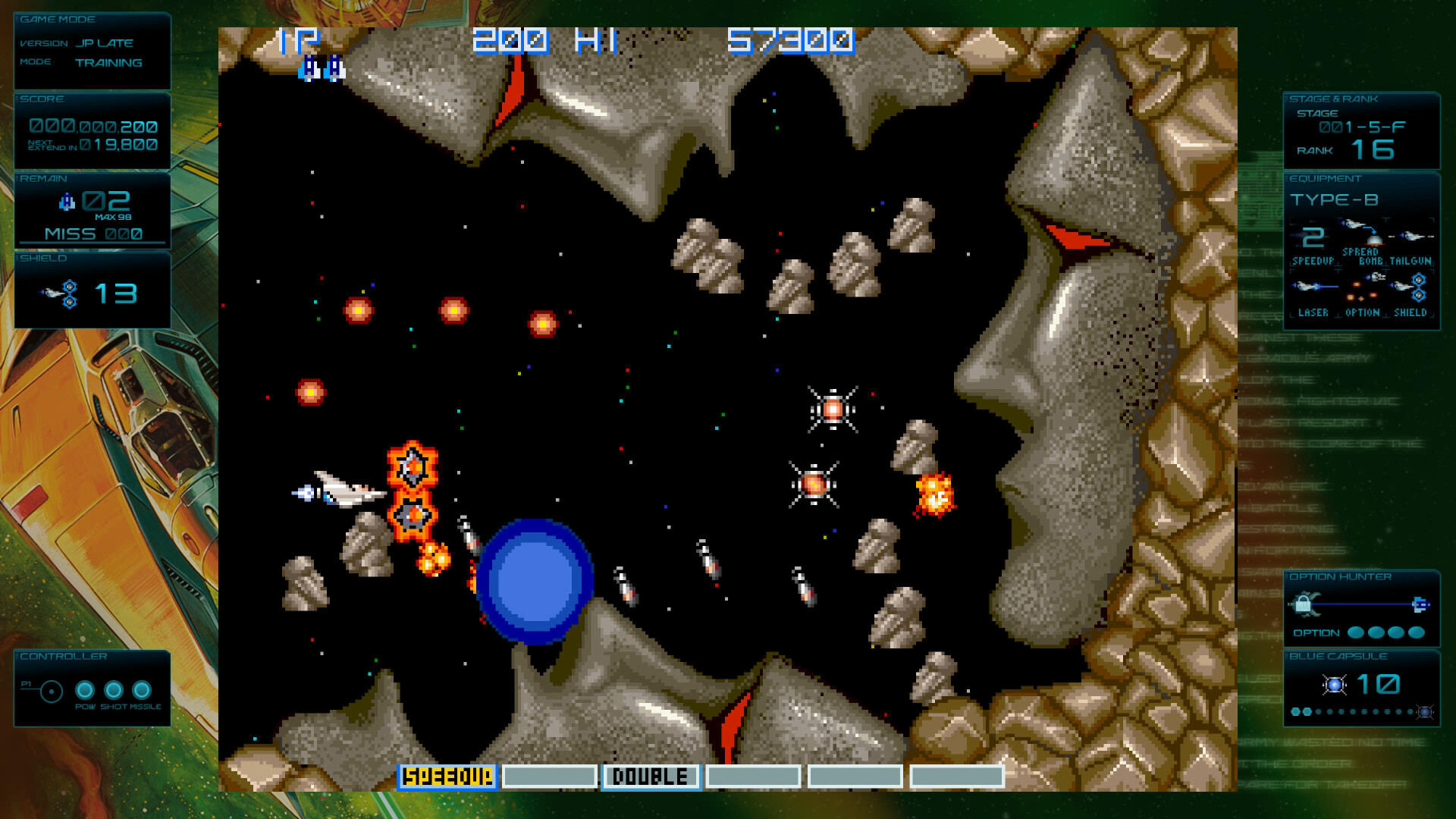
If you thought the Moai heads were mean bastards, then you havent seen the absolute insanity that M2 cooked up in Salamander III. The visuals go hard into the nightmarish cyber nightmare that 80s shoot-em-ups were known for, but with less lifting from Switzerlands most famous designer.
For all of Salamander IIIs crushing difficulty, it still manages to be the most lenient out of all of the titles in this compilation. Respawning is fast, and youre given enough mercy invincibility to reclaim any or all of your dropped power-ups. It moves at a breakneck, almost panic-inducing pace where all the action on screen and intensity feels like you cant even catch your breath.
Gradius Origins is yet another superb collection of some of Konamis classics from the 80s and 90s. Including a new game was like a massive, glistening cherry on top that might even steal the show for some fans. The ports all run excellently and even retain some of their old quirks, depending on which version you choose to play. Even when playing on easy, these are still monumentally difficult games.
GRADIUS ORIGINS was reviewed on PlayStation 5 using a code provided by Konami. Additional information about Niche Gamer’s review/ethics policy is here. GRADIUS ORIGINS is now available for Windows PC (via STEAM), Xbox Series X|S, PlayStation 5, and Nintendo Switch.
